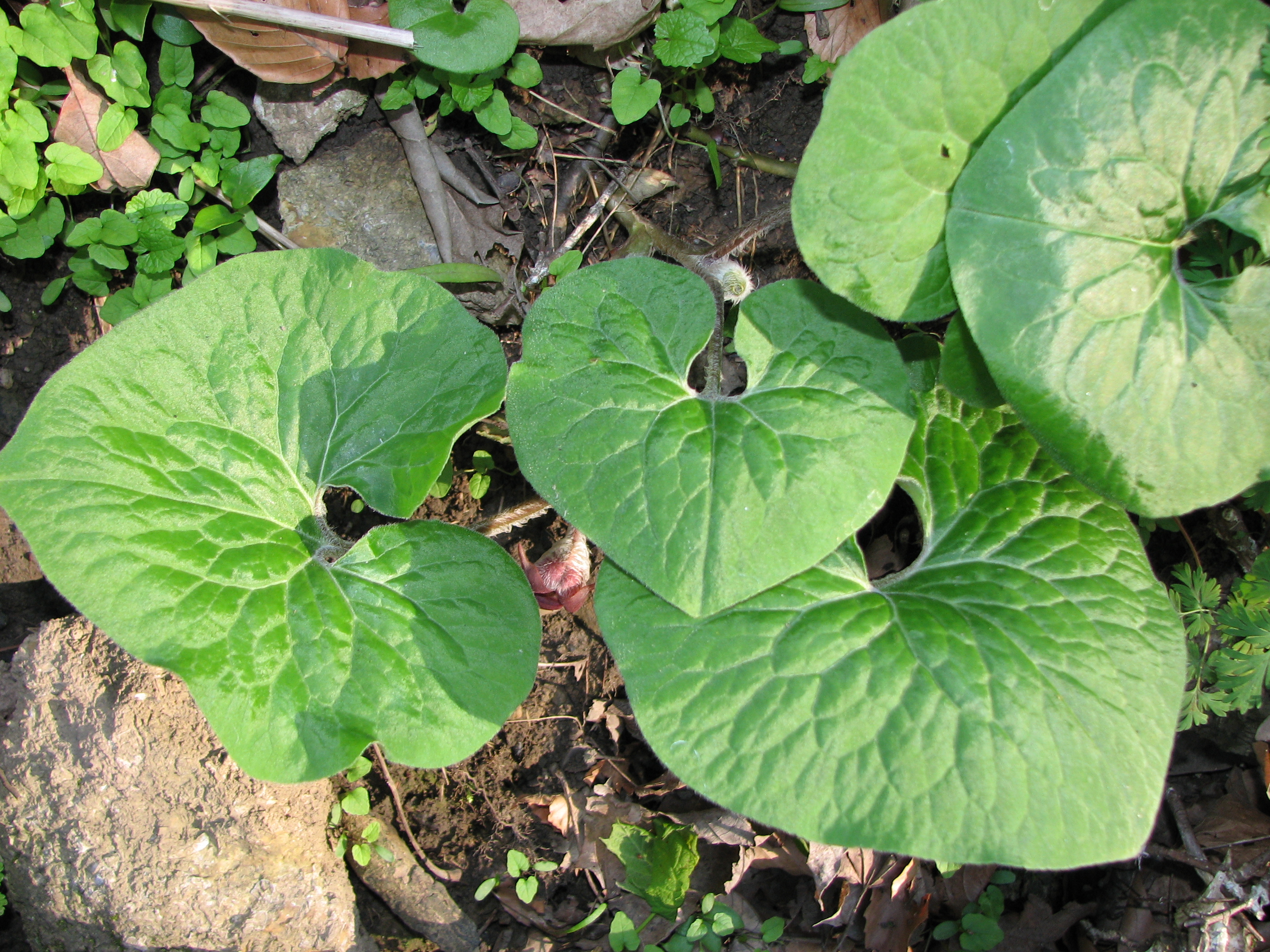- Asarum canadense
taxobox
name = "Asarum canadense"
status = G5
status_system = TNC
status_ref = Cite web
publisher =NatureServe
title = Asarum canadense
work = NatureServe Explorer
url = http://www.natureserve.org/explorer/servlet/NatureServe?searchName=Asarum+canadense+
accessdate = 2007-12-15]
regnum =Plant ae
divisio =Angiosperm s
classis =Magnoliid s
ordo =Piperales
familia =Aristolochiaceae
genus = "Asarum "
species = "A. canadense"
binomial = "Asarum canadense"
binomial_authority = L.
synonyms = "A. acuminatum"
"A. canadense" var. "acuminatum"
"A. canadense" var. "ambiguum"
"A. canadense" var. "reflexum"
"A. reflexum"
"A. rubrocinctum"|"
Asarum canadense ", commonly known as Canada wild ginger, Canadian snakeroot and broad-leaved asarabaccais, is a perennial herb native to rich, moistforest s of easternNorth America . It is found from theGreat Plains east to the Atlantic Coast, and from southeasternCanada south to approximately thefall line in the southeasternUnited States . In early spring it develops distinct, hairy, cup-shaped, tan or purple flowers which terminate in three long spike-likesepal s. The longrhizome s give rise to persistent kidney-shaped leaves. They often form colonies or clusters as the rhizome spreads. Thediploid chromosome number is 26.Citation
last =Whittemore
first =Alan T. ; Mesler, Michael R.; Lu, Karen L.
contribution =Asarum canadense
year =2006
title =Flora of North America
editor-last =Flora of North America Editorial Committee, eds. 1993+
volume =3
contribution-url =http://www.efloras.org/florataxon.aspx?flora_id=1&taxon_id=233500168
place=New York & Oxford
publisher =Oxford University Press] The plant protected as a statethreatened species inMaine .citation| contribution=Asarum canadense| title=USDA PLANTS Database| contribution-url=http://plants.usda.gov/java/profile?symbol=ASCA]Uses
The long rhizomes of "A. canadense" were used by Native Americans as a seasoning. It has similar aromatic properties to true ginger ("
Zingiber officinale "). It is considered to be approximately 1/3 as strongly flavored as "Z. officinale",Fact|date=December 2007 but it is not related to true ginger and should not be used as a substitute because it contains an unknown concentration of the carcinogenaristolochic acid . [citation| last=Duke| first=Jim| contribution="Asarum canadense"| title=Dr. Duke's Phytochemical and Ethnobotanical Databases| contribution-url=http://sun.ars-grin.gov:8080/npgspub/xsql/duke/plantdisp.xsql?taxon=131] These plants can be easily grown in woodland orshade garden s. Native Americans used the plant as a medicinal herb to treat a number of ailments includingdysentery , digestive problems, swollen breasts, coughs and colds,typhus ,scarlet fever , nerves, sore throats, cramps, heaves, earaches, headaches, convulsions, asthma,tuberculosis , urinary disorders and venereal disease. In addition, they also used it as a stimulant, an appetite enhancer and a charm. It was also used as an admixture to strengthen other herbal preparations.References
External links
*commons-inline
Wikimedia Foundation. 2010.
